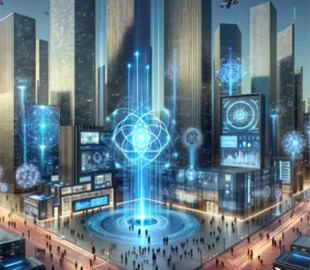
The tests were conducted in a real urban environment.
Three separate research groups have demonstrated quantum entanglement, in which two or more objects are linked in such a way that they contain the same information, even if they are several kilometers apart in real-world urban settings. This is an important step on the way to the future quantum Internet – network that will allow the exchange of information encoded in quantum states, writes Nature.
The experiment was conducted in the USA, China and the Netherlands. The researchers were able to connect parts of the network using photons in the fiber-friendly infrared part of the spectrum.
The quantum internet can allow any two users to set the most secure cryptographic keys to protect confidential information. But taking full advantage of obfuscation can do much more – in particular, to combine individual quantum computers into one large and powerful machine. This technology can also help in conducting certain types of scientific experiments, for example by creating networks of telescopes.
Transition from the laboratory to the urban environment – it's a “different beast,” says physicist Ronald Hanson, who led the experiment at Delft University of Technology.
Researchers agree that building a large-scale network will probably require using existing fiber-optic technology.
The problem is that quantum information is fragile and cannot be copied; it is often carried by individual photons, rather than laser pulses that can be detected, then amplified and emitted again.
«Photons are also affected by changes in temperature throughout the day – and even the wind if they are above the ground. That's why creating confusion in a real city – it's a big deal», – says physicist Tracey Northup of the University of Innsbruck in Austria.
Each of the three demonstrations used different types of "quantum memory" devices. to store the qubit. In China, qubits were encoded in clouds of rubidium atoms; in the Netherlands, a connection was established between nitrogen atoms embedded in small diamond crystals; The US also used diamond-based devices, but with silicon atoms instead of nitrogen, using the quantum states of both the electron and the silicon nucleus.

